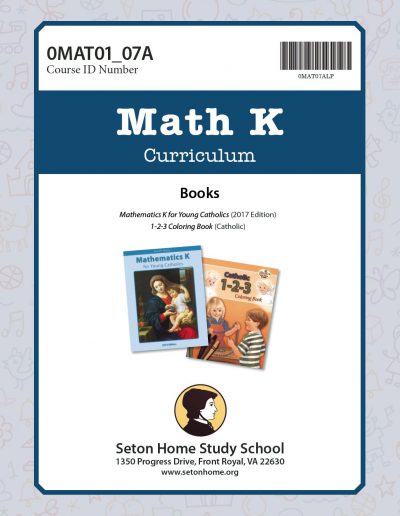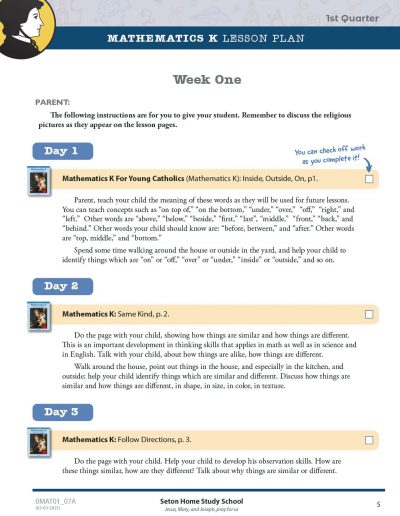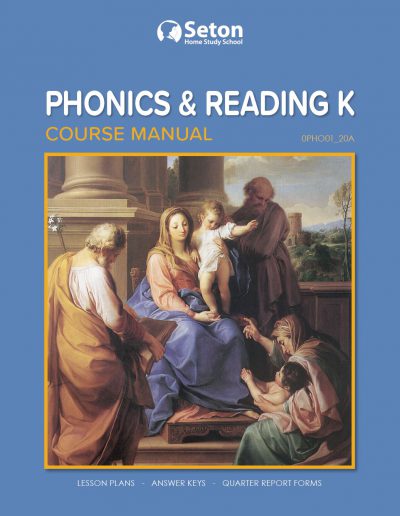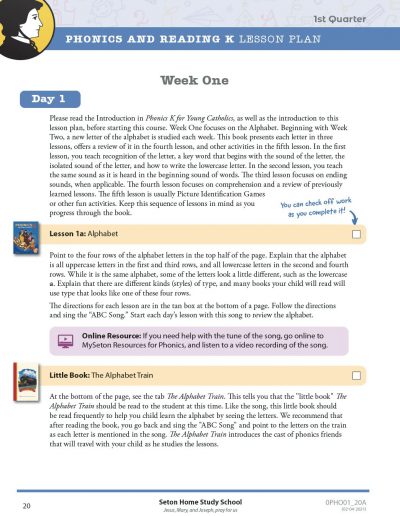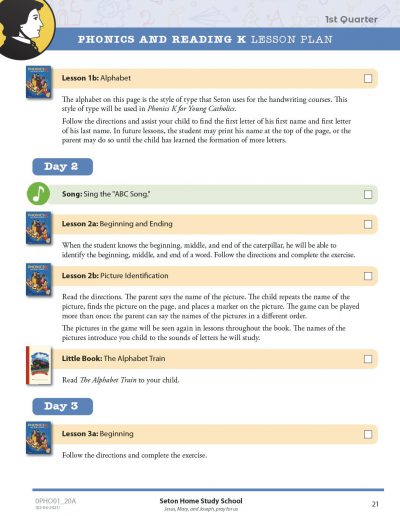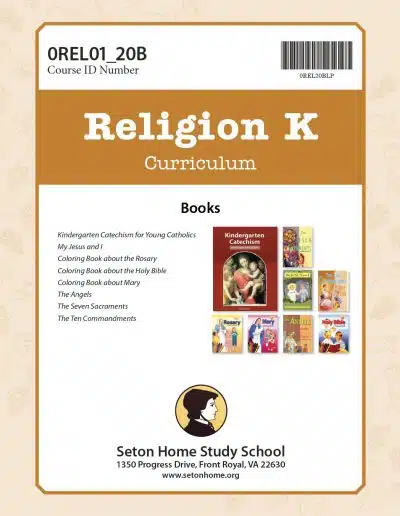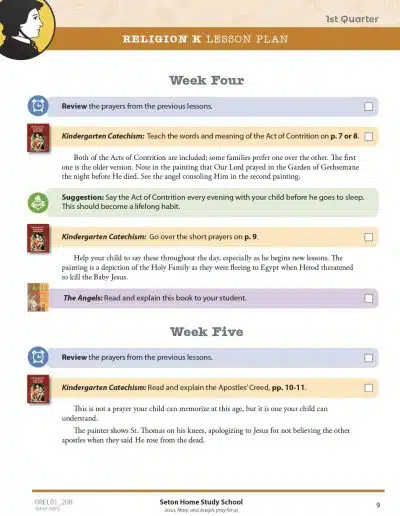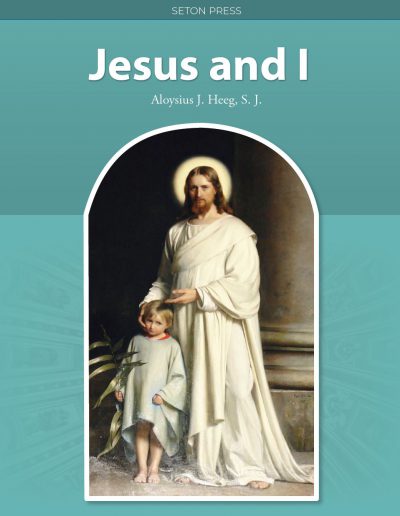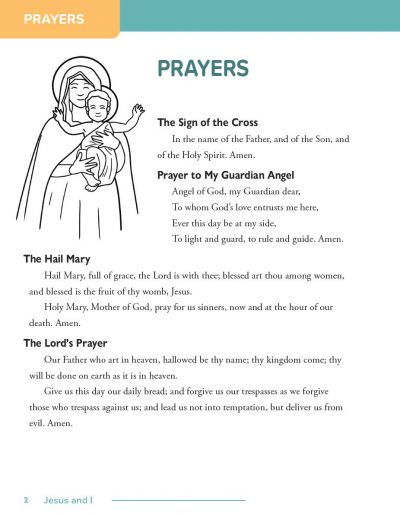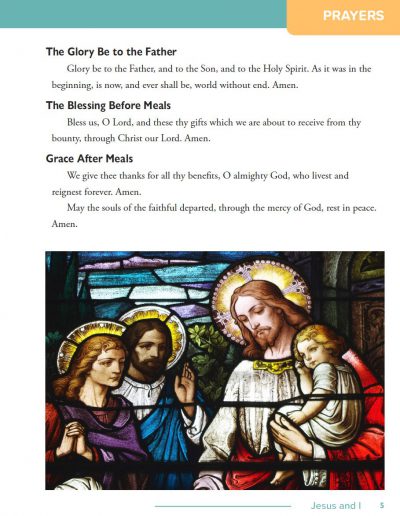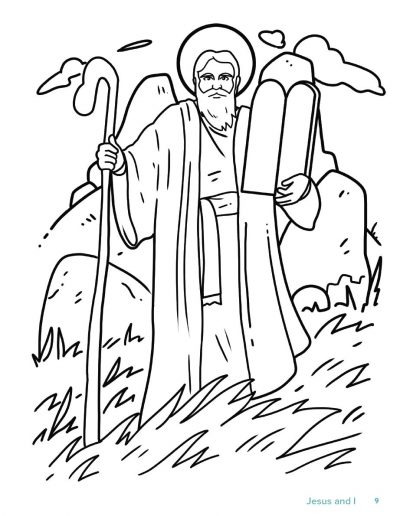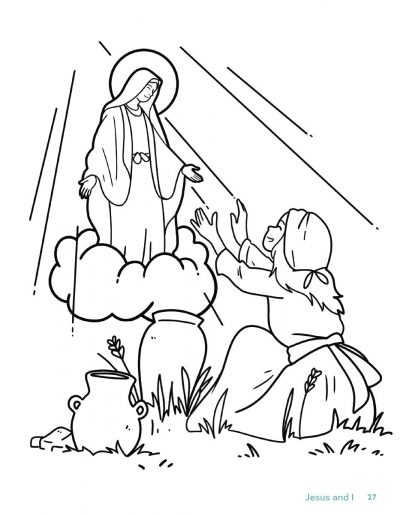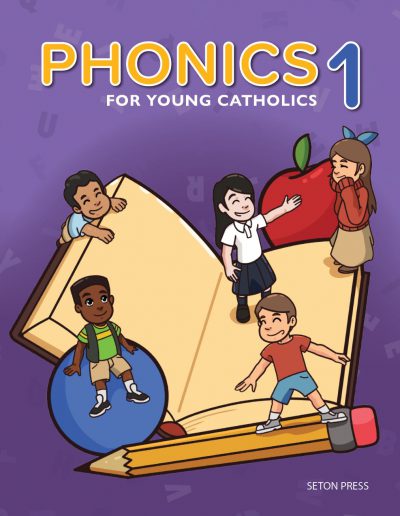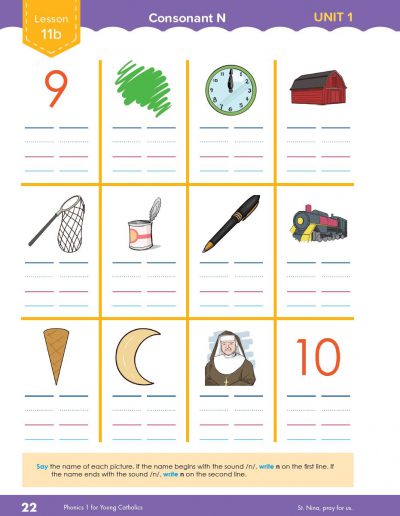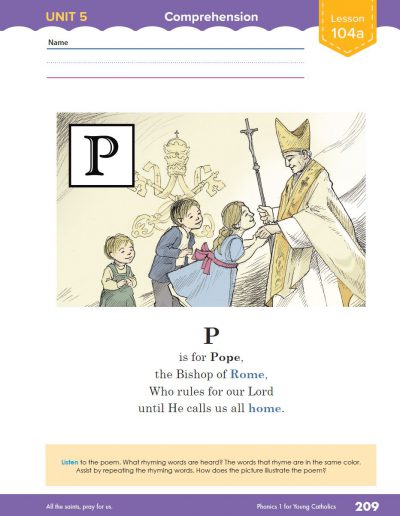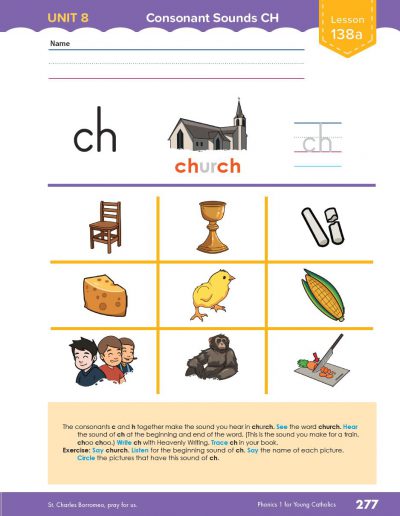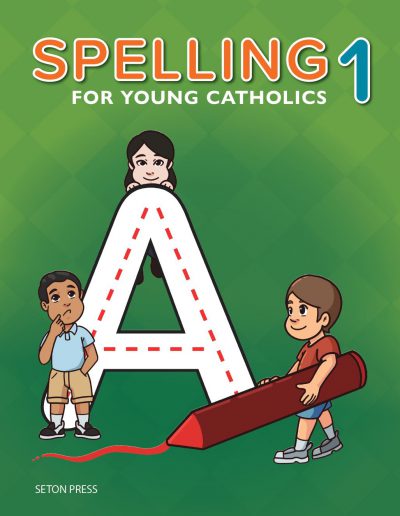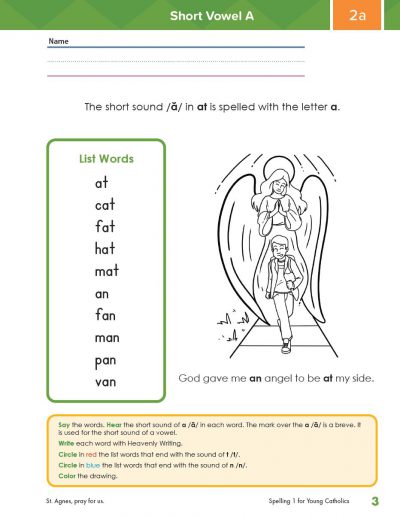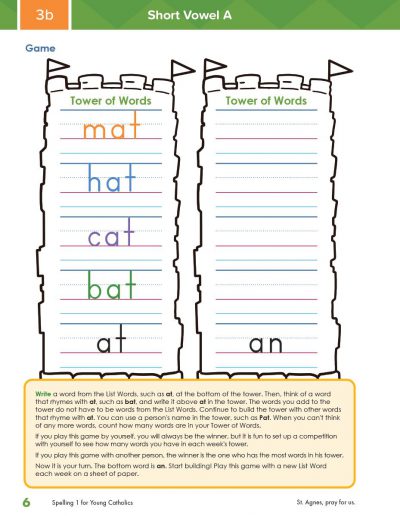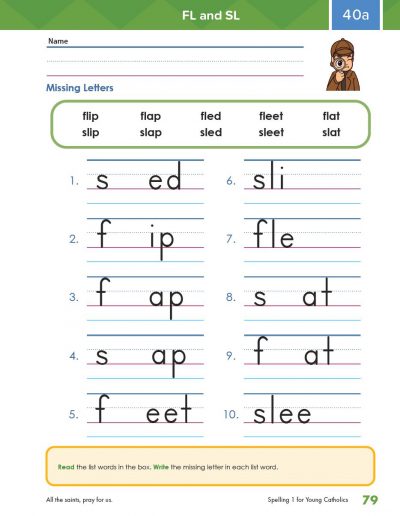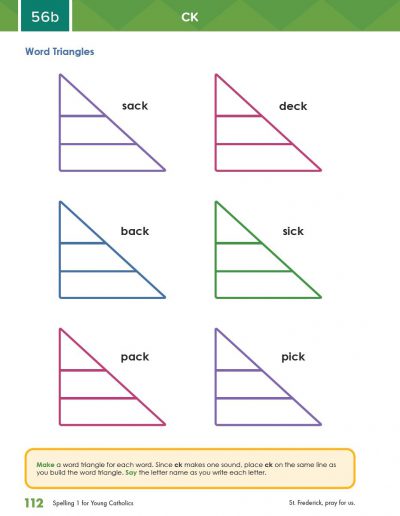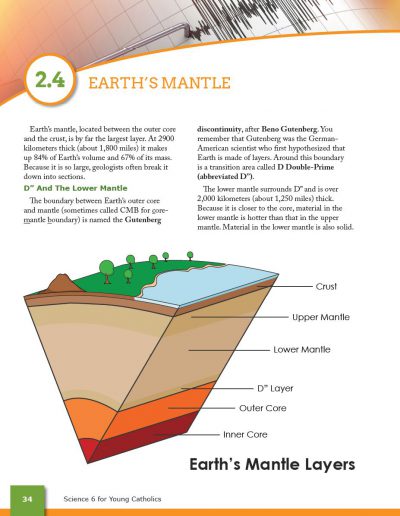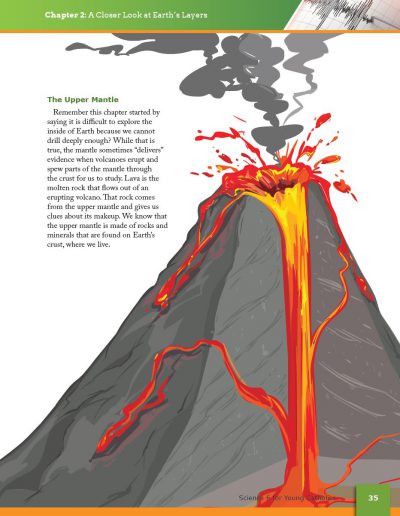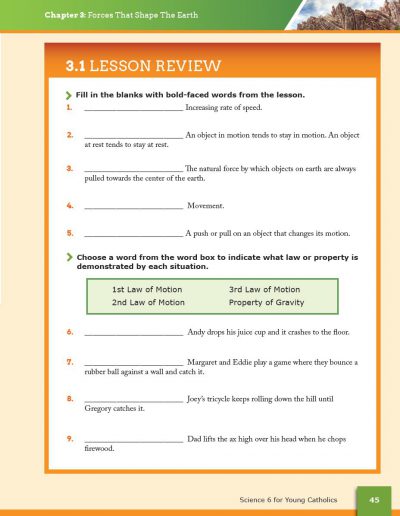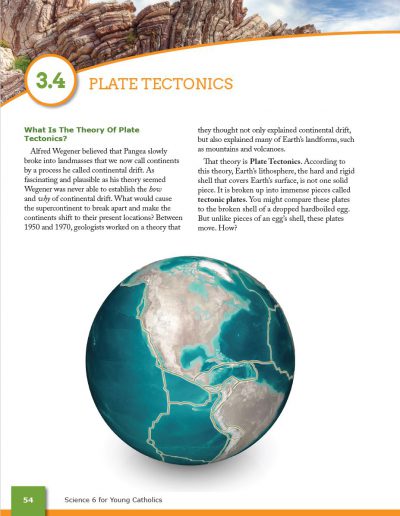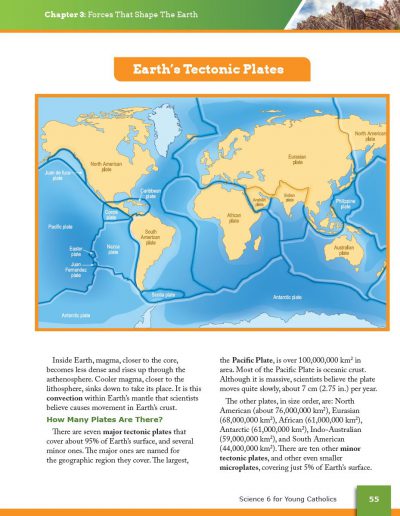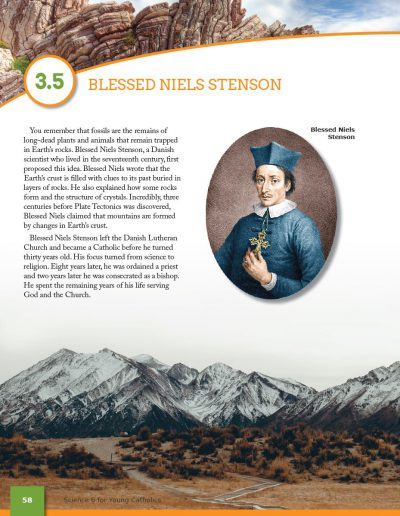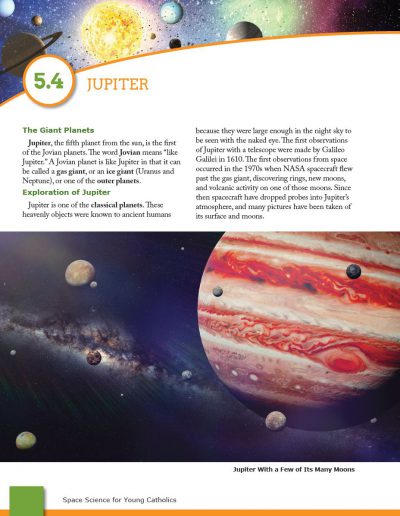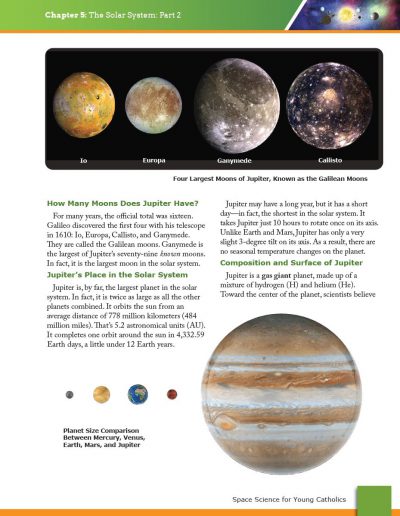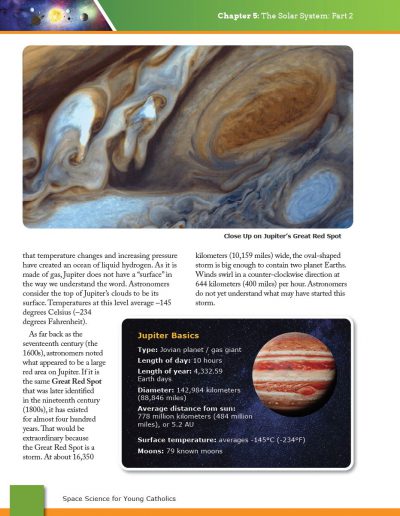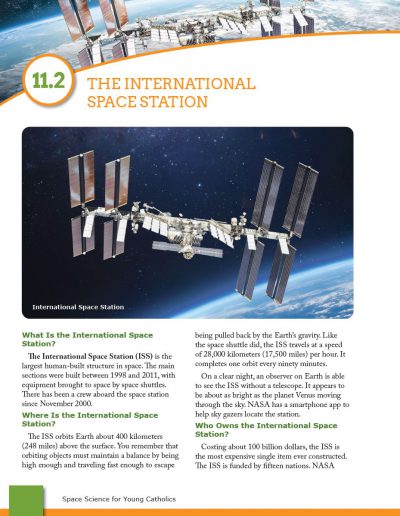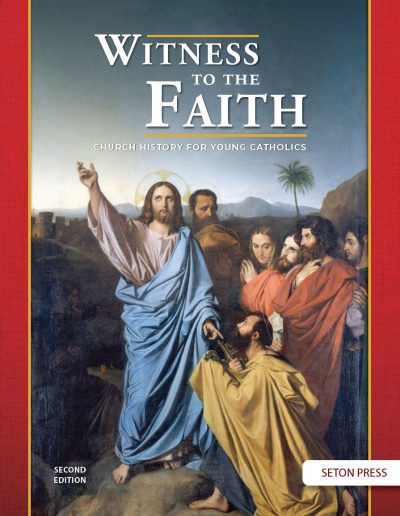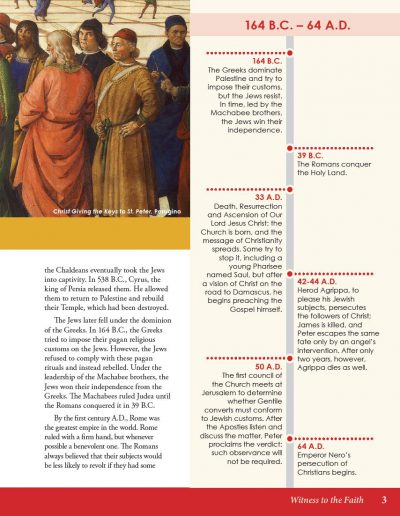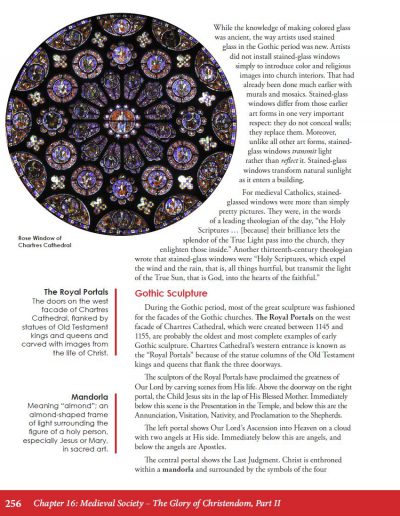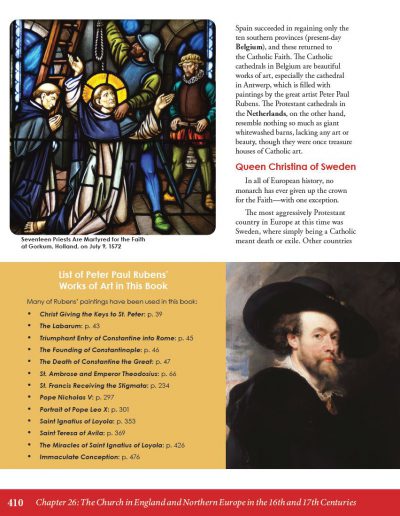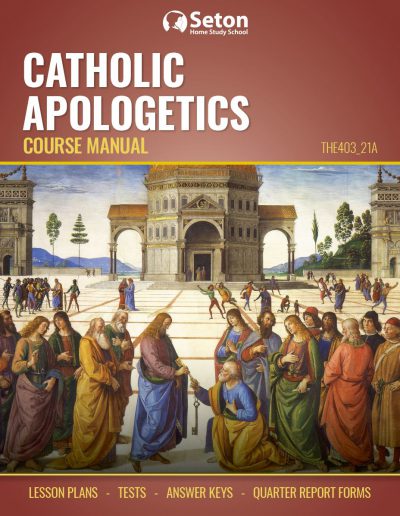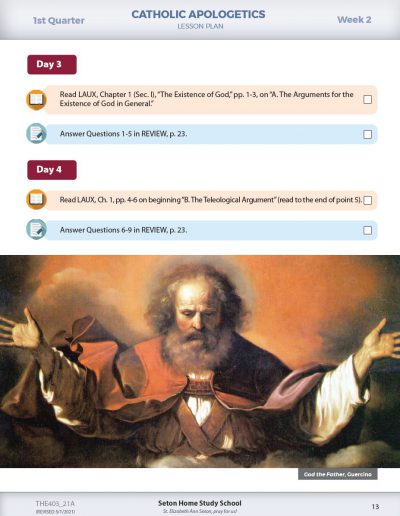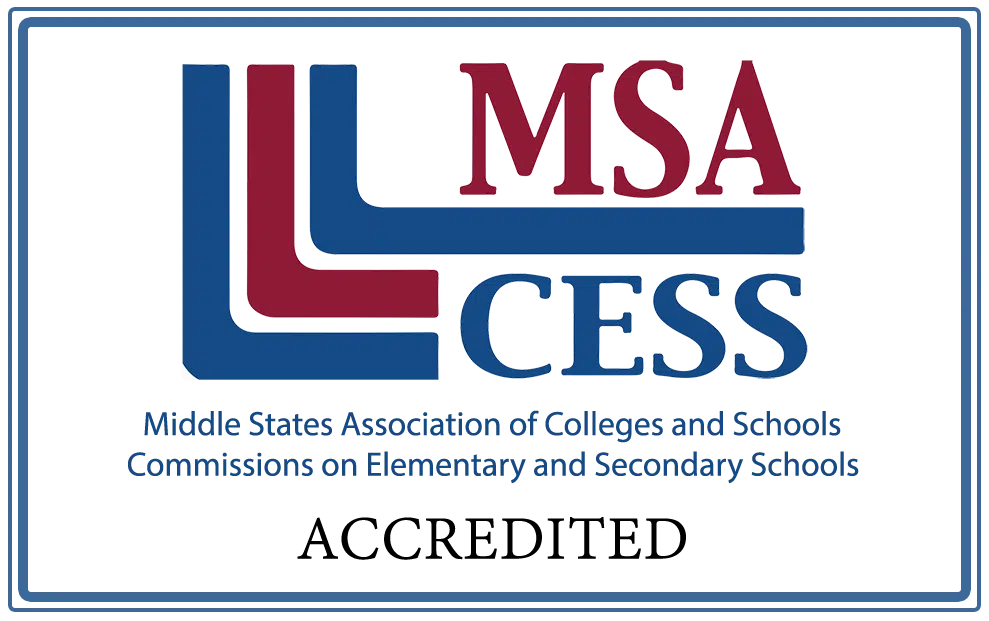
As we have more curriculum changes this year than in any previous year I can remember, I wanted to put together this list for you. Not only can you find out the precise changes to expect and when those changes will occur, but I think seeing the entire list really gives you a sense of Seton’s commitment to making the best curriculum in the country even better. Pre-K is the only grade level that didn’t really have a change, so I will jump to Kindergarten.
Kindergarten
Last year, Kindergarten received a completely new Phonics and Reading program which introduced reading earlier and made dramatic improvements in both teaching methods and presentation while keeping all of the great Catholic content. One of the changes was also a newly formatted color lesson plan for Phonics. This year, all of the rest of the Kindergarten lesson plans were given the new color format as well, so Kindergarten now has our first fully colorized lesson plan. The new Lesson Plan is available now.
First Grade
This year, the new Phonics program which began in Kindergarten has been continued into First Grade. We will have a new Phonics workbook, a new reader, 4 new little booklets, and games. While our team was working on the new course, they also realized that the Spelling 1 book should be redesigned to coordinate with the Phonics, so we also have a new Spelling 1 book. The new courses also have colorized lesson plans.
The only other change in First is that we have a new printing of Jesus and I. While the text is the same as it has always been, Seton now has a license to reprint this book and redesign it, so we have added full color sacred art and our in-house artist, Nathan Puray, has added several coloring pages to make it a more enjoyable experience for students. The new materials and lesson plans are expected around June 1, so students enrolled after that time should receive the new materials.
We are making a special provision for families who enrolled before the new course was available. If they have enrolled in the current (older) Phonics 1, they can contact Customer Service after June 1, pay a $20 upgrade fee, and we will ship out the new courses (without you having to return the old Phonics/Spelling). On June 1, the First Grade tuition is increasing by $20, so that is why that amount was selected—it is just the difference in tuition..
Second Grade
None of the Second Grade books have changed, and the only thing to mention here is the colorization of the Phonics, History, and Art lesson plans. These are available now.
Third Grade
This grade had the colorization of Phonics, English, History, Vocabulary, and Physical Education lesson plans and there were two books changed in Reading 3. We used to use two St. Joseph Picture Books, one on St. Pio and the other on St. Therese, as included book report books. We have replaced those with two books from the In the Footsteps of the Saints series which have a more appropriate reading level for students to be able to read without as much assistance. The new books are on St. Bernadette and St. Joseph. The new books and Lesson Plan are available now.
Fourth Grade
In Grades 4-8, we have added two book report options to the Classic Novels category. The goal of this project was to add more selections featuring a female protagonist as many parents felt we needed better options for girls. Especially in the higher grades, we have a lot of adventure and sword fighting type stories with which some students had a difficult time connecting. The two new options for the 2nd Quarter of Fourth Grade are Charlotte’s Web by EB White and The Cabin Faced West by Jean Fritz. In Grades 4-8, we are also going through a process of reviewing our Reading lesson plans and improving both their clarity and their daily balance. Internally, we have been referring to this as an “optimization” of the Reading lesson plans. Part of this optimization also included accounting and scheduling for the time it takes students to actually read the four book report books (though this wasn’t as much an issue for Fourth Grade in specific).
Colorized lesson plans for Phonics, Art, Spelling, and Vocabulary have been designed, but no other significant changes for the year. These changes are available now.
Fifth Grade
The book report options added to Fifth Grade are Number the Stars by Lois Lowry and The Lion, the Witch, and the Wardrobe by C. S. Lewis. Reading 5 Lesson Plan has been optimized, and the Phonics Lesson Plan has been colorized. These changes are available now.
Sixth Grade
A completely new and amazing Science 6 has just been completed. There are two brand new Seton Press books for this course. Earth Science for Young Catholics will be used in the 1st, 2nd, and 3rd Quarters and Space Science for Young Catholics will be used in the latter part of 3rd Quarter and in the 4th. Even while dealing with the topic of Earth Science itself, this course is very careful to not take a position on the controversial topic of the precise age of the Earth. Modern scientific theories are presented without making any definitive conclusions on that topic.
This appears to be one of the best courses Seton has ever made. The Space Science book even covers current SpaceX projects, going into detail about the Crew Dragon launch last year. The Apologia alternate option using the Swimming Creatures book will remain an option, but we will go back to charging extra for that book (we had started including it at no additional cost last year when the older Gods Marvelous Works book went out of print).
The Reading 6 Lesson Plan has been optimized, and the new Science 6 Lesson Plan has been colorized. The two new book report options are The Good Master by Kate Seredy and Blue Willow by Doris Gates. The Good Master, incidentally, is the prequel to The Singing Tree, which is a book we have used as a Seventh Grade book report for more than two decades.
The new Sixth Grade Lesson Plan and new books should be available around July 1. However, I know many families will be anxious to get the new Science course, so we are allowing families to enroll in that now, and we will simply backorder it and ship it out to you when it comes in. You would have to make sure you select the “Science 6” course with the two new books on your enrollment application, as we will not be making it the default course until it is back from the printers.
Seventh Grade
Reading 7 has been optimized and the additional book report options are Anne of Green Gables by LM Montgomery and The Crystal Snowstorm by Mariol Trevor. One subject lesson plan has been colorized [as this article is being written, it hasn’t been determined if it will be Religion or History]. The new Seventh Grade Lesson Plan should be available around June 18.
Eighth Grade
Religion 8 has a new Second Edition of Witness to the Faith. The main text has been heavily improved and several entirely new chapters have been added. The book is now printed as a hardback text. The new layout is a work of art. Given the amount and significance of the improvements, the older edition of the book is no longer compatible with the new course.
Reading 8 has been optimized and the additional book report options are The Secret Garden by Francis Hodgson Burnett and The Witch of Blackbird Pond by Elizabeth George Speare. For those unfamiliar with the book, Elizabeth George Speare is also the author of The Bronze Bow which we use in our first year of High School English, and the story is not about an actual witch, but rather a false accusation of witchcraft in 17th century New England.
The new Eighth Grade Lesson Plan should be available around mid-June, but the Second Edition of the Witness to the Faith book is available now.
HIGH SCHOOL
I will list each course which has notable changes and will treat them by subject area.
Literature and Composition
I think this change is one of the most important we have done, so I asked Walker Solis who was our English specialist on the project to explain.
“Seton has begun a process of renaming our core high school English courses to clarify their essential content. The first of these is English 9, which is being reissued this year as Literature and Composition. More than just a renaming, though, the course has also been substantially reworked to optimize its effectiveness as our foundational high school English course.
The literature covered in the course remains the same as English 9, with new helps, including improved study guides. The biggest changes are in the way composition is taught. We found that some of our best writing lessons were in our underutilized elective Mechanics of Composition. We moved several days of these lessons, along with many sample paragraphs, from this course into Literature and Composition. As a result, Mechanics will be retired from our course offerings, although it will remain available for admissions to give to students in select cases.
The amount of writing has been reduced in the new course, but the mindset was not simple cutting, but reorganizing, so that the assignments would be sequential—from sentence quizzes to paragraphs to full essays—and prioritizing, so that a reduction in quantity would be balanced with increased standards of quality. Thus, instead of two essays per book analysis, we now assign one, but with each analysis, we raise the minimum word count and provide more precise content objectives. The same is true of the research report, which is now a shorter research essay, but with a meticulous focus on quality sources of research, careful note-taking, and accurate outlining, citation, and formatting. The student is given more tools, with samples for all compositions, and more time to make thoughtful, more confident choices in their writing.
The student of Literature and Composition has a carefully-charted, incremental path toward mastery of literary analysis and high school composition.”
This new course should be available around June 1.
Spanish III
We have a new textbook version of Spanish III which replaces our previous textbook version. This new Spanish III uses the same AMSCO series that we use for the textbook Spanish II course. This course is now available.
Calculus
Saxon has switched from a First Edition to a Second Edition. We have now written new tests for the new Second Edition book. This course is now available.
Physical Science
Apologia has a new Third Edition of the Physical Science book. However, we are happy with the Second Edition and wish to continue with it as our default option as long as we can. To that end, we have purchased enough Second Editions to last us through this academic year, but we have also designed a course for the new Third Edition. The Second Edition will remain as the default for this year, but the Third Edition will be available as an alternate option. We expect this new course will be available sometime in August.
Biology for Life
We are going through and adding extensive study guides to the lesson plans and updating our tests. The new revision probably won’t be available until August or even September. We are also working on a physical lab manual that would be available as a supplemental item for those looking to get lab designation for the course but I don’t have a precise ETA on that item. Our current policies allow experiments from any appropriate source, however, it would be nice to have a product specifically designed for our text.
World History
Although we have not finished writing our new world history text, we do have testing changes which should help both parents and students with the existing Anne Carroll World History text. About half of the world history tests had formerly been written parent-graded tests. It is considerably difficult for most parents to find the time to grade written tests on their own. The course already has many written tests which are Seton-graded, so we decided to change the parent-graded tests into Seton-graded multiple choice tests. A few changes and improvements have also been made to the existing Seton-graded tests. The new revision of this course should be available around July 1.
Personal Finance Online
This is a new half-credit online-only course written by John Clark. It is a perfect complement to our half-credit Economics Online course, also written by John Clark. This course is highly practical for students and covers skills like setting up a checking account, paying taxes, buying a car, buying a home, and setting up a retirement account. It covers how investments work in such things as stocks, bonds, and mutual funds. There are many videos used in the course, and in addition to being practical, it should be fairly fun and not too difficult for students. This course is now available.
Catholic Doctrine
The text and course manual for this course is unchanged, but we have re-vamped the way we do testing for this course. We formerly had one test each quarter. There were some balance of work issues with those as the very first one had three essays, which was really far too much for a student to do in a single class period. We have changed the model to three tests each quarter, two that are multiple choice and one that is written. The written tests are being balanced so that they can easily be done in a single class period. Students have really loved this course, especially since it was made into an aligned course with a layout in SetonOnline. This change should make it even better. This course should be available around July 1.
Apologetics
Apologetics is now an aligned course with color lesson plans and a layout in SetonOnline. The content of the course also had some minor improvements, specifically with the addition of study guides which students can use to better prepare for tests. This revision is now available.
CONCLUSION
I really want to give special thanks and acknowledgement to John Adams and his Curriculum Development team and to Joe Sparks and his Visual Arts and Online Courses team. This has been the most ambitious year for curriculum improvement projects of any year in our history, and we have many more projects in progress for next year. Seton is absolutely committed to producing the best possible experience for our students and their families, and nowhere has that been more apparent to me than when assembling this long list of curriculum improvements and being familiar with all of the work that has gone on behind the scenes to make this possible. All of these changes help us in our mission to empower our students to live out their Catholic Faith while they face all of the academic and vocational challenges of the modern world.


